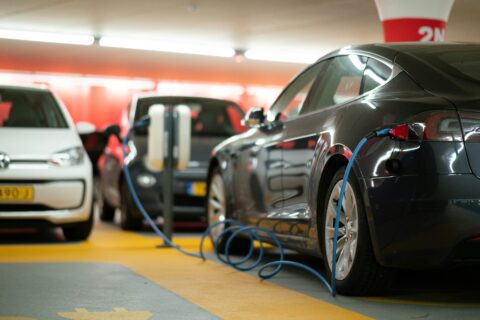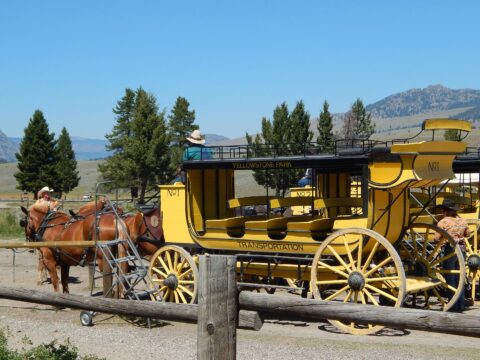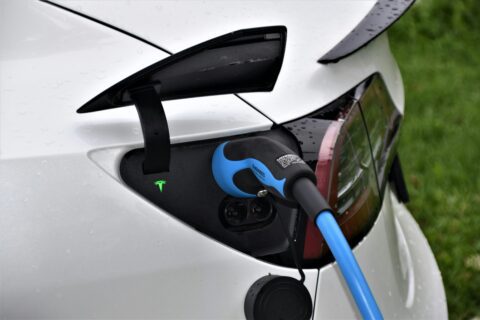Introduction: The Evolution of Transportation
Buckle up and get ready for a thrilling ride through the annals of transportation history! From the humble beginnings of horse-drawn carriages to the mind-boggling concept of hyperloops, humanity has come a long way in its quest for faster, more efficient ways to travel. Join us as we embark on an exhilarating journey through time, exploring how transportation has evolved over centuries and shaped our world in unimaginable ways. Get ready to be amazed by the transformative power of innovation and technology that have propelled us from trotting horses to futuristic modes of transport. So grab your virtual ticket – it’s time to hop aboard this exciting adventure into the fascinating realm of transportation!
Early Forms of Transportation: From Horses to Steam Engines
Before the advent of modern transportation methods, our ancestors relied on different means to travel from one place to another. In ancient times, they relied on horses as their primary mode of transportation. Horses were not only used for riding but also for pulling carriages and carts.
These horse-drawn carriages played a vital role in transporting goods and people over long distances. However, this method was slow and limited by the endurance and speed of the horses. It wasn’t until the invention of steam engines that transportation truly began to evolve.
The introduction of steam-powered locomotives revolutionized travel during the Industrial Revolution. Trains could move at unprecedented speeds compared to horse-drawn carriages, making them an efficient mode of transportation for both people and goods.
Steam engines paved the way for railways which connected cities and towns across countries, enabling easier trade and transportations between regions. The development of rail networks had a profound impact on society as it facilitated economic growth, encouraged urbanization, and created new job opportunities.
With each passing decade came improvements in technology leading to more advanced forms of transportation such as automobiles powered by internal combustion engines. This breakthrough allowed individuals greater freedom in traveling independently without being dependent on train schedules or horse availability.
Simultaneously with automobile advancements came innovations in aviation history – airplanes became a reality! Air travel transformed how we perceive distance; what once took days or weeks can now be accomplished within hours through flight!
While early forms may seem primitive compared to today’s cutting-edge vehicles like hyperloops or flying cars – it is important never underestimate their significance! These early inventions set the stage for future developments that continue shaping our world today!
Transportation has come a long way since its humble beginnings with horses hauling carriages along dirt roads! With each era comes new possibilities – from steam engines revolutionizing land travel to airplanes taking us skyward! As we look towards tomorrow’s innovations like hyperloops or flying cars – let’s not forget the rich history that brought us here!
The Rise of Automobiles and Airplanes
The Rise of Automobiles and Airplanes
As the 20th century dawned, a new era of transportation was about to take flight. The invention of automobiles revolutionized how we moved from one place to another on land, while airplanes opened up the skies for exploration and travel.
With the introduction of mass-produced cars like Henry Ford’s Model T, automobiles became more accessible to the average person. No longer were they reserved for the wealthy elite. People could now experience freedom and mobility like never before.
Meanwhile, airplanes were soaring to new heights. Thanks to visionaries such as the Wright brothers, powered flight became a reality in 1903. Over time, aircraft designs improved and aviation technology advanced rapidly.
Air travel not only transformed long-distance journeys but also shortened travel times significantly. What used to take days or weeks by ship or train could now be accomplished in mere hours by plane.
The rise of automobiles and airplanes brought about profound changes in society. They fostered economic growth through increased trade and tourism opportunities. They also connected people across vast distances, fostering cultural exchange and understanding.
However, these advancements did not come without their challenges. The increasing use of fossil fuels led to pollution concerns and environmental impact that are still being addressed today.
Nonetheless, there is no denying that automobiles and airplanes have forever changed how we navigate our world. They have given us an unprecedented level of freedom and access that previous generations could only dream of.
In conclusion (only conclusive statement), as we reflect on this historical journey of transportation from horse-drawn carriages to hyperloops, it becomes clear that human innovation knows no bounds when it comes to conquering distances and exploring new frontiers
Modern Innovations: High-Speed Trains and Electric Vehicles
Modern Innovations: High-Speed Trains and Electric Vehicles
High-speed trains and electric vehicles have revolutionized transportation in recent years, offering faster, more efficient, and environmentally friendly alternatives to traditional modes of travel.
High-speed trains are marvels of engineering, combining sleek design with advanced technology to reach astonishing speeds. These trains can zip across tracks at incredible velocities, reducing travel time significantly. With their smooth rides and comfortable interiors, high-speed trains provide a luxurious experience for passengers while also minimizing congestion on roads and reducing carbon emissions.
Electric vehicles (EVs) have gained popularity as eco-friendly alternatives to gasoline-powered cars. With zero tailpipe emissions and lower maintenance costs compared to traditional vehicles, EVs are paving the way towards a greener future. Rapid advancements in battery technology have increased the range of EVs, making them more practical for long-distance journeys. Additionally, the availability of charging stations has expanded exponentially, making it easier than ever to charge an electric vehicle on-the-go.
Both high-speed trains and electric vehicles not only benefit individuals but also contribute positively to society as a whole. By reducing reliance on fossil fuels and decreasing air pollution levels in urban areas, these innovations play a crucial role in mitigating climate change impacts.
The future looks promising for both high-speed train systems and electric vehicles as governments continue investing heavily in infrastructure development and incentivizing green transportation options. As technology continues to advance rapidly, we can expect further enhancements that will make these modes of transport even faster, safer,and more sustainable.
Future Possibilities: Hyperloops and Flying Cars
Future Possibilities: Hyperloops and Flying Cars
The future of transportation is looking increasingly exciting, with two innovative concepts capturing the imaginations of engineers and visionaries alike: hyperloops and flying cars. These futuristic modes of transport promise to revolutionize the way we travel, offering faster, more efficient, and environmentally friendly alternatives.
Hyperloops, first proposed by Elon Musk in 2013, are high-speed transportation systems that use low-pressure tubes to propel pods or capsules at incredible speeds. With the potential to reach speeds of up to 760 miles per hour (1,220 kilometers per hour), hyperloops could drastically reduce travel times between cities. Imagine being able to commute from one city to another in a matter of minutes!
On the other hand, flying cars have long been a staple of science fiction movies but are now becoming a reality. Companies like Uber and Airbus are actively exploring this concept with prototypes already undergoing testing. These vehicles would combine vertical take-off capabilities with traditional driving functionality, allowing them to navigate both roads and airways seamlessly.
While these technologies hold great promise for the future of transportation, there are still significant challenges that need to be overcome before they become widespread realities. Safety concerns regarding hyperloop systems and airspace regulations for flying cars remain key issues that need careful consideration.
Nonetheless, as technology continues to advance at an unprecedented pace, it’s only a matter of time before we see these futuristic modes of transport integrated into our daily lives. The possibilities they offer in terms of reducing congestion on roads and providing faster journeys are truly remarkable.
In conclusion – Although still in their nascent stages today; hyperloops and flying cars represent bold steps towards transforming how we travel in the future! Only time will tell if these concepts can overcome their challenges; but one thing is certain – transportation will continue evolving as new ideas emerge! So strap yourself in for an exciting ride into tomorrow’s world!
Impact on Society and the Environment
The evolution of transportation has had a profound impact on both society and the environment. As our modes of travel have advanced over time, they have opened up new opportunities for commerce, tourism, and personal mobility. However, they have also brought about significant challenges that we must address.
On one hand, improved transportation systems have connected people across vast distances and facilitated economic growth. Goods can now be transported more efficiently than ever before, allowing businesses to expand their markets and consumers to access a wider range of products. The ability to travel quickly and easily has also boosted tourism, enabling individuals to explore new cultures and experiences.
Yet these advancements come at a cost. The reliance on fossil fuels in traditional forms of transportation has contributed significantly to environmental degradation. Vehicle emissions are responsible for a significant portion of greenhouse gas emissions worldwide, contributing to climate change and air pollution. Additionally, the construction of extensive road networks and infrastructure has encroached upon natural habitats and led to habitat fragmentation.
To mitigate these negative impacts, there is an urgent need for sustainable transportation solutions. High-speed trains powered by renewable energy sources offer an environmentally friendly alternative for long-distance travel within countries or between regions. Electric vehicles are gaining popularity as cleaner options for personal transport but still require further development in terms of charging infrastructure.
Looking ahead into the future possibilities discussed earlier – hyperloops could revolutionize intercity travel with their potential speed capabilities while minimizing environmental impact by using clean energy sources such as solar power. Flying cars may sound like something out of science fiction movies but are being actively developed as a means to alleviate traffic congestion in urban areas.
As technology continues its relentless march forward, it is essential that we consider not only efficiency but also sustainability when designing transportation systems. By prioritizing renewable energy sources, investing in public transit infrastructure, promoting carpooling initiatives,and encouraging active modesof transport like cycling or walking – we can work towards creating greener cities with reduced carbon footprints.
The journey of transportation has been a remarkable one, from horse-drawn







